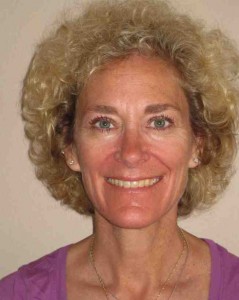
Imagine an albatross sitting on top of a huge iceberg. The albatross sits at the highest point of the iceberg and sees nothing but snow and ice in all direction. It then proclaims in a loud voice, “I see beyond what anybody else can and I attest that the universe is nothing but ice!”
Are we being like the albatross when we proclaim that the universe is nothing but space-time? We put our telescopes on top of high mountains and peer in all directions and see nothing but space-time and so some of us feel that there is nothing more to the universe. The difficulty for us is that our minds are primarily rooted in space-time. This means all our tools and our languages are oriented in that direction. We are trapped in our limitations and like the frog in the well some of us seem to think that the patch of sky above is all that is to universe. It now seems that scientists and philosophers are waking up to the possibility that the space-time universe is just the tip of the iceberg of the totality of reality. So the question is if we are submerged in a reality that is predominantly not space-time why do we struggle to accept this?
The problem is that when we go beyond space-time our language, our mathematics, and our ability to think, all break down. This is because all the ideas, concepts, and structures in our head are related to space-time. We use these to formalize our thoughts. When we verbalize our thoughts in spoken and written word we use language. And when we do it more rigorously we use mathematics that science uses. However all this simply breaks down, because at the root of the entire framework is our conception of space-time. When we go beyond space-time we simply do not have the tools to even think or express anything.
St. Thomas was a prolific writer. After a mystical experience near the end of his life, he put his pen down in the middle of a treatise: “Reginald, I can write no more,” he said to his friend. “All that I have hitherto written seems to me nothing but straw!”
Throughout history those who have glimpsed beyond the ordinary have clammed up. One of the earliest mystics who has left a written record was Lao Tzu. He said, “The Dao you can talk about is not the eternal Dao.”
One of the techniques to fathom the unfathomable was to shock the mind into silence. This was done by using paradoxes. If you could present a paradox that created a knot that logic and language could not break, the hope was that this would silence that part of the mind that worked with space-time constructs and logic. The idea was that if this were silenced consciousness would then be able to grasp the unfathomable that lay beyond space-time.
In ancient times, around 500 BC, the Indians organized something they called the “Brahmodaya competition” to accomplish this. The aim of the competition was to come up with a verbal formula that would help understand the Brahman. The Brahman, like the Tao, was supposed to be the innermost essence of everything and was too subtle to conceptualize or talk about. To prepare for the competition participants would go to the jungle and stay in isolation. They would fast, meditate, do yoga, and do different breathing exercises, all this in an attempt to induce an altered state of consciousness. This was important because it was assumed that the grasp of the Brahman was not possible in the ordinary conscious state. Having so prepared they would return for a verbal duel. Karen Armstrong describes how the duel worked:
“The challenger issued his own elliptical and paradoxical description of the Brahman, one that embodied all his learning and insight. Then his opponents had to respond, building on the challenger’s formula and taking the description a step further. But the winner was the one who reduced everybody to silence — and in that silence the Brahman was present.”
In blog posts, books, television, and streaming media, we have an endless chatter of thoughts swirling around. The paradox is that as we multiply our thoughts we get increasingly disconnected from our essence. All we are doing is beating the same space-time drum to death. What we really need is to unplug from all this and find the silence that will undo the knots that tie us down. In this case less is more. Each one of us has to find a way to organize a modern version of the “Brahmodaya Competition” inside ourselves and find a level of silence that takes us to our true Self.
Related: The Peace That Passes All Understanding




